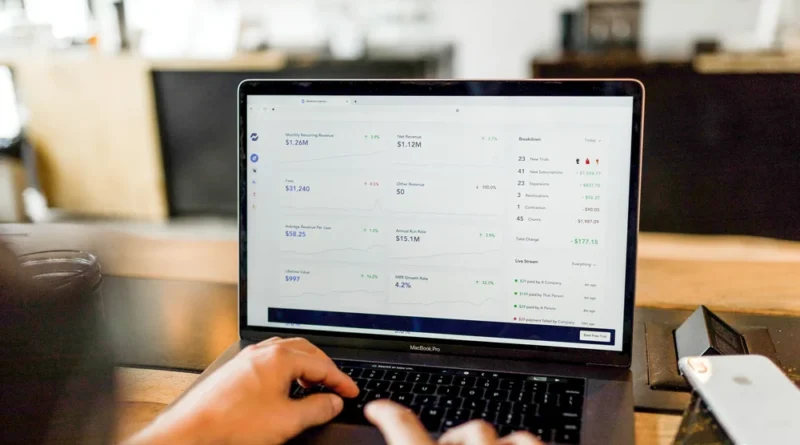Billing Analytics: Harnessing Data Insights for Business Growth
In the era of large volumes of data, learning how to leverage it correctly is key to streamlining business operations. When it comes to billing, the right approach to payment analysis can help you improve financial tactics and keep the revenue steam flowing.
Collecting and analyzing payment data doesn’t just help you ensure timely payments and define the best billing options. It generates insight into customer behavior and helps you improve marketing and sales tactics.
Let’s take a closer look at billing and payment analytics.
What is billing analytics?
Billing analytics is a system a company uses to gather and analyze payment data. Whenever a customer makes a purchase or renews a contract, the company can receive a large volume of useful information. Each transaction provides data on the location a purchase was made, the way it was made, and how it was made.
When you look at this data from the billing analytics perspective, it can help you improve your decision-making process in various business aspects including:
· The efficiency of your billing system
· The availability of in-demand payment methods
· Patterns of customer behavior
· Efficiency of your marketing tactics
Payment analytics is an integral part of your data analytics process. It can help your sales team convert new customers while allowing the marketing team to streamline their retention tactics.
Essential Elements of Payment Analytics
To maximize the benefits of payment analytics, you have to collect the right data and track essential metrics. The key elements you need to pay attention to include:
Payment Sources
By analyzing payment data, you can evaluate the most and least popular payment sources for your customers and clients. This, in turn, can help you optimize your sales strategies and even discover opportunities for cross-selling.
When you monitor payment data, you can analyze customer behavior and take action whenever something out of the ordinary happens. For example, you can catch unusual spending behavior and react to it immediately.
Payment Failure
People cancel or lose credit cards all the time. They rarely remember to update this information with their service provider. If you have a client with a subscription, a canceled credit card usually means that the subscription is over. You would have to spend time figuring out why they didn’t renew the subscription. During this period, clients could choose another service provider.
By analyzing payment data carefully, you can discover reasons for payment failure and arrange additional guidance for your clients or customers. According to Kansys, Inc, the leading provider of usage-based billing software, continuous billing analytics can help troubleshoot payment issues.
Customer Churn
Successful analytics of the payment process allows you to discover reasons for customer churn and loyalty. You can identify how many customers you are gaining and losing as well as how the payment process factors into this.
For example, you change the billing approach and see customers struggling to make a payment and leaving. Alternatively, adding a new payment method could result in attracting a larger target audience.
This information can also be helpful for your marketing team, which is working on effective lead generation and retention tactics.
Success Rates
By conducting payment analytics, you can gather data related to the performance of different channels (online vs offline or website vs app). This can help you figure out which payment approach works the best and measure the ROI of different sales channels.
You can also gain information about customers who are at risk of leaving your company or stopping to use your services. The frequency of purchases and contract renewals can help you gain insight into customer volatility.
Resource Allocation
When you are monitoring such data as transaction volumes, you can figure out when your company is at its peak operations. This can help you make important decisions about allocating the budget for employees, operating hours, and supplies.
For example, if you notice that the majority of your transactions occur at the evening hours, you can reroute efforts to after-hours customer support. You may also decide to reinforce your marketing tactics to target customers who are online during later hours.
Customer Experience
Around two-thirds of customers expect the company to focus on their experience and provide a high level of support. By analyzing billing and payment approaches, you can gather more information about your audience and streamline personalization.
For example, by monitoring the dates when your regular customers make payments, you could figure out the most convenient billing time. Setting personalized billing dates for your audience can improve customer experience and increase retention.
Going Forward with Billing Analytics
By analyzing the way your customers make payments, you can get valuable insight into their needs, requirements, and behavior. This, in turn, can help you make better business decisions that improve your company’s bottom line.
Since each financial transaction generates a vast amount of data, you can easily gather sufficient information to improve your sales and marketing strategies.
In the era of large volumes of data, learning how to leverage it correctly is key to streamlining business operations. When it comes to billing, the right approach to payment analysis can help you improve financial tactics and keep the revenue steam flowing.
Collecting and analyzing payment data doesn’t just help you ensure timely payments and define the best billing options. It generates insight into customer behavior and helps you improve marketing and sales tactics.
Let’s take a closer look at billing and payment analytics.
What is billing analytics?
Billing analytics is a system a company uses to gather and analyze payment data. Whenever a customer makes a purchase or renews a contract, the company can receive a large volume of useful information. Each transaction provides data on the location a purchase was made, the way it was made, and how it was made.
When you look at this data from the billing analytics perspective, it can help you improve your decision-making process in various business aspects including:
· The efficiency of your billing system
· The availability of in-demand payment methods
· Patterns of customer behavior
· Efficiency of your marketing tactics
Payment analytics is an integral part of your data analytics process. It can help your sales team convert new customers while allowing the marketing team to streamline their retention tactics.
Essential Elements of Payment Analytics
To maximize the benefits of payment analytics, you have to collect the right data and track essential metrics. The key elements you need to pay attention to include:
Payment Sources
By analyzing payment data, you can evaluate the most and least popular payment sources for your customers and clients. This, in turn, can help you optimize your sales strategies and even discover opportunities for cross-selling.
When you monitor payment data, you can analyze customer behavior and take action whenever something out of the ordinary happens. For example, you can catch unusual spending behavior and react to it immediately.
Payment Failure
People cancel or lose credit cards all the time. They rarely remember to update this information with their service provider. If you have a client with a subscription, a canceled credit card usually means that the subscription is over. You would have to spend time figuring out why they didn’t renew the subscription. During this period, clients could choose another service provider.
By analyzing payment data carefully, you can discover reasons for payment failure and arrange additional guidance for your clients or customers. According to Kansys, Inc, the leading provider of usage-based billing software, continuous billing analytics can help troubleshoot payment issues.
Customer Churn
Successful analytics of the payment process allows you to discover reasons for customer churn and loyalty. You can identify how many customers you are gaining and losing as well as how the payment process factors into this.
For example, you change the billing approach and see customers struggling to make a payment and leaving. Alternatively, adding a new payment method could result in attracting a larger target audience.
This information can also be helpful for your marketing team, which is working on effective lead generation and retention tactics.
Success Rates
By conducting payment analytics, you can gather data related to the performance of different channels (online vs offline or website vs app). This can help you figure out which payment approach works the best and measure the ROI of different sales channels.
You can also gain information about customers who are at risk of leaving your company or stopping to use your services. The frequency of purchases and contract renewals can help you gain insight into customer volatility.
Resource Allocation
When you are monitoring such data as transaction volumes, you can figure out when your company is at its peak operations. This can help you make important decisions about allocating the budget for employees, operating hours, and supplies.
For example, if you notice that the majority of your transactions occur at the evening hours, you can reroute efforts to after-hours customer support. You may also decide to reinforce your marketing tactics to target customers who are online during later hours.
Customer Experience
Around two-thirds of customers expect the company to focus on their experience and provide a high level of support. By analyzing billing and payment approaches, you can gather more information about your audience and streamline personalization.
For example, by monitoring the dates when your regular customers make payments, you could figure out the most convenient billing time. Setting personalized billing dates for your audience can improve customer experience and increase retention.
Going Forward with Billing Analytics
By analyzing the way your customers make payments, you can get valuable insight into their needs, requirements, and behavior. This, in turn, can help you make better business decisions that improve your company’s bottom line.
Since each financial transaction generates a vast amount of data, you can easily gather sufficient information to improve your sales and marketing strategies.




